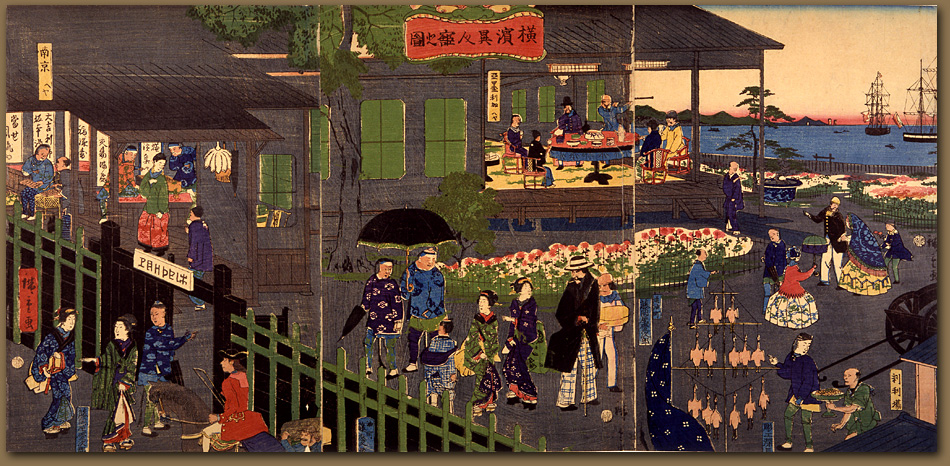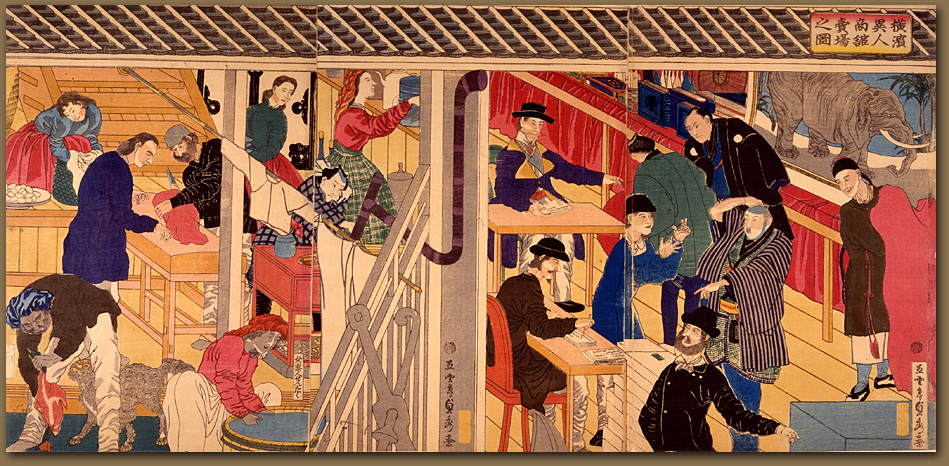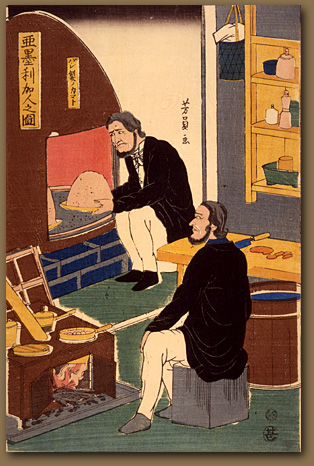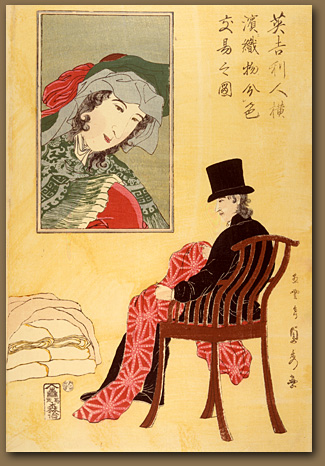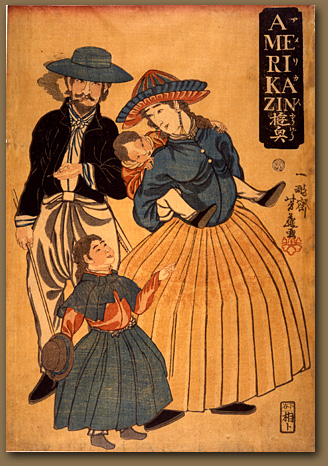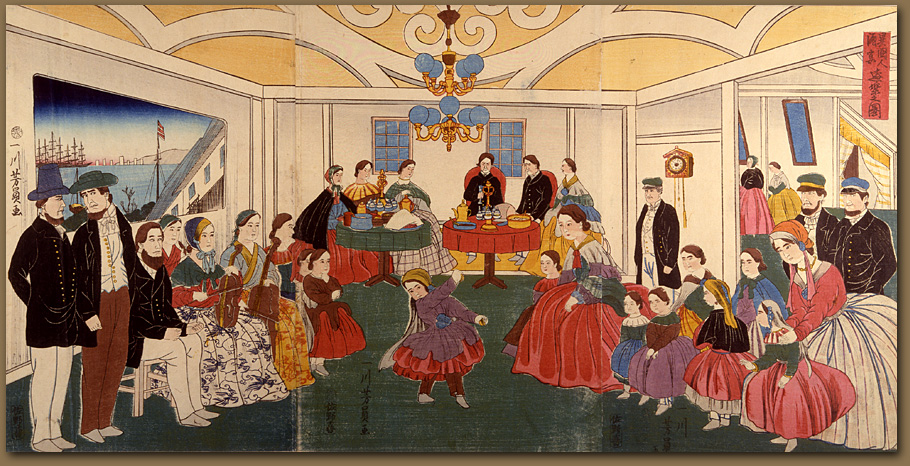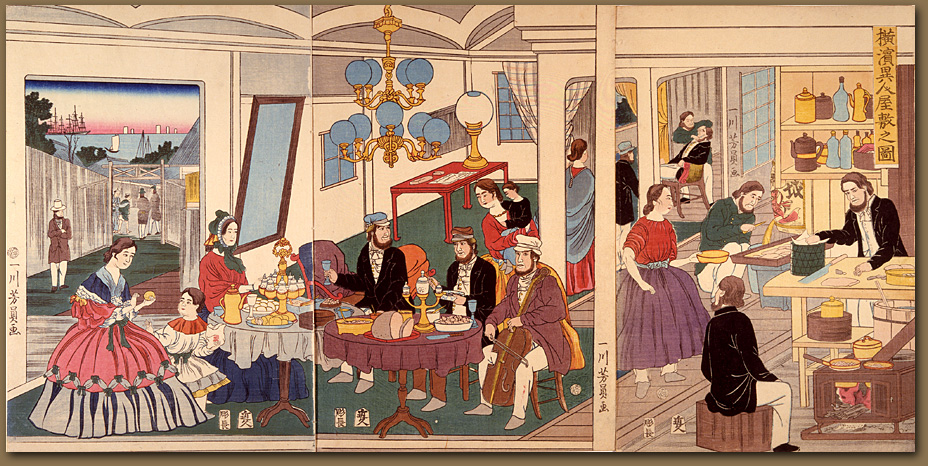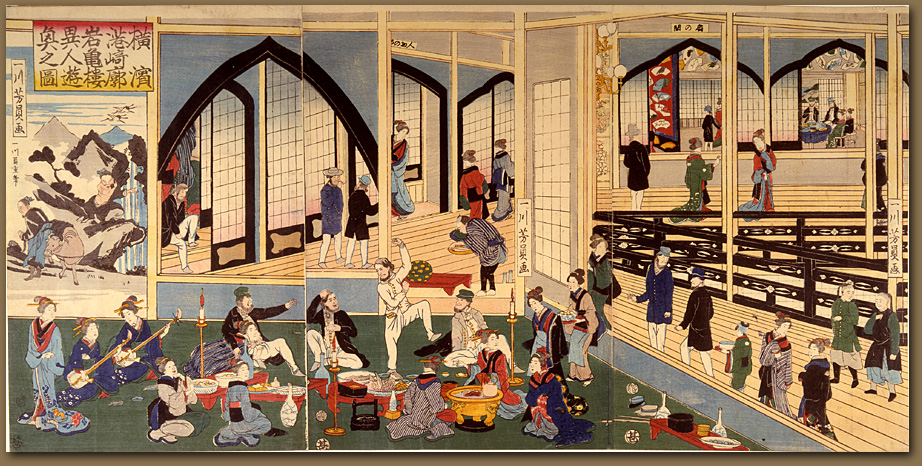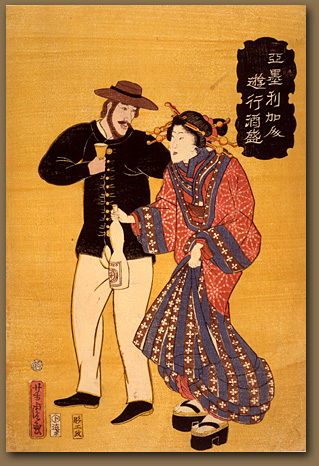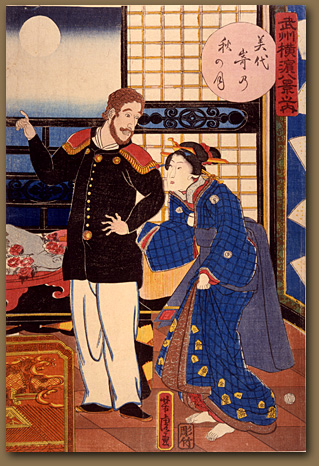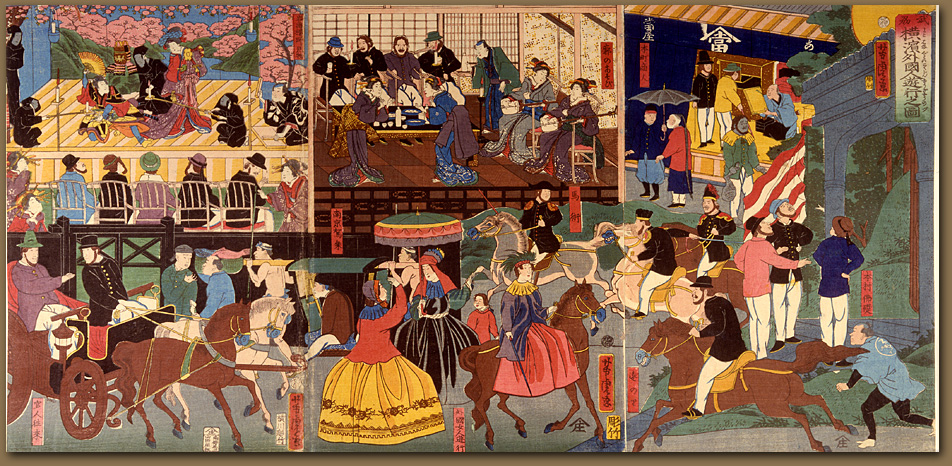Inside an office, merchants bargain with Japanese tradesmen. Hand gestures indicate their lack of a common language.
Servants do laundry and cooks prepare meat and duck.
Boomtown, the Story:
People of the Five Nations

The first American firm to reach Yokohama, Walsh & Company, established their compound in 1859...
A lonely Englishman is lost in thoughts of his absent wife, who gazes down at the young merchant from a framed portrait.
Yokohama society was predominantly young men. Living conditions were not luxurious and often unsafe, and there were few diversions in the early years.
Few Americans and Europeans acclimated to Japanese foods and longed for familiar staples, like bread.
There were few women and children in early Yokohama, but they were a common subject of imagined scenes.
The American father smokes a cigarette—a novelty in Japan—and the mother carries the child “Japanese-style” on her back.
The interiors of Western homes were also a fascination.
These were perceived as opulent due to the large-sized rooms, carpets and chandeliers.
As the Yokohama settlement developed, elaborate entertainments, as in these scenes, became popular.
This young girl dancing at a children’s ball in Washington, DC, is actually a copy of an image from a New York newspaper.
Among the attractions of the Gankiro, the largest establishment in Miyozaki, was the “Fan Room” decorated with fan paintings.
View a party in the Fan Room
In the upper-right corner, a Western-style dinner party takes place with male patrons and Japanese hostesses seated at a table.
Below, a less decorous party takes place on the floor, Japanese-style.
Depictions of Western men and courtesans varied from bawdy to a romanticized, “Madame Butterfly” style.
Prints are gifts of Ambassador William and Florence Leonhart, reproduced courtesy
of the Arthur M. Sackler Gallery, Smithsonian Institution, Washington DC.
“Yokohama Boomtown” Massachusetts Institute of Technology © 2008 Visualizing Cultures
A Project of Professors John W. Dower and Shigeru Miyagawa
Based on the catalogue of the 1990 exhibition at the Arthur M. Sackler Gallery,
Smithsonian Institution, Yokohama: Prints from 19th-Century Japan,
by Ann Yonemura. © 1990 Smithsonian Institution
On viewing images from the historical record: click here.
Design and production by Ellen Sebring, Scott Shunk, and Andrew Burstein


